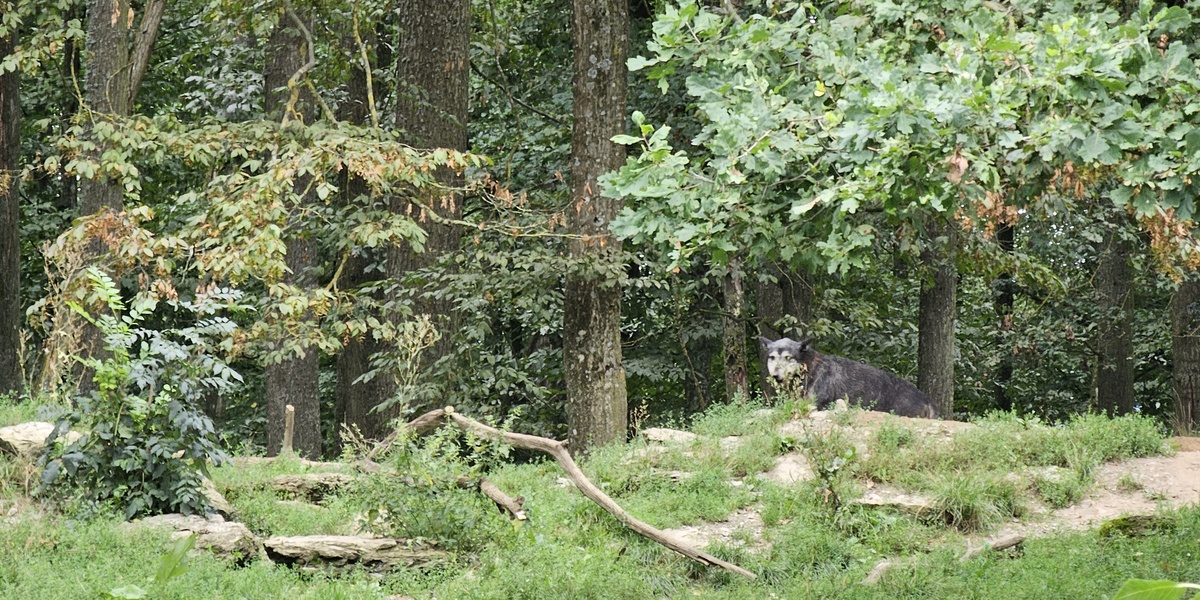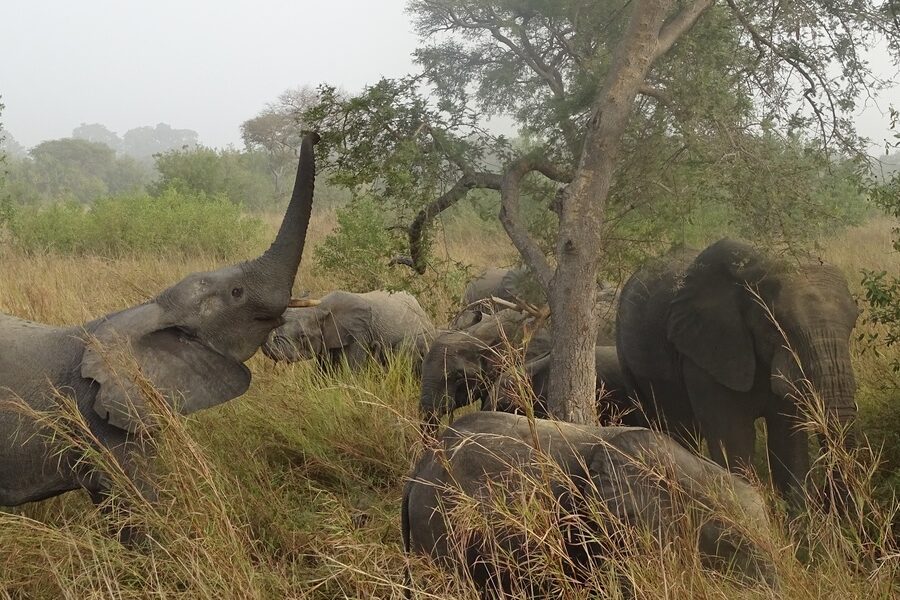Forests from boreal stands to lowland jungles host a wide array of predators that influence prey populations, seed dispersal, and human-wildlife interactions. This list focuses on species tied to wooded habitats, useful whether you’re planning fieldwork, teaching, or just curious about who lives in the canopy and understory.
There are 41 forest carnivores, ranging from the African golden cat to the Yellow-throated marten. For each species the data are organized as Scientific name,Weight (kg),Range — you’ll find below.
Which of these species are most at risk and why?
Threat levels vary by region, but many forest carnivores face habitat loss, fragmentation, and persecution; smaller species often suffer from local extinctions while larger ones decline from hunting and reduced prey. Check the Range and Scientific name entries below to match species with regional threat assessments and conservation listings.
How can I use the table to identify animals near me?
Start by filtering the Range column for your country or biome, then compare Weight (kg) and Scientific name to field guides or camera-trap photos; combined, those columns help narrow likely candidates and guide targeted observation or reporting.
Forest Carnivores
| Name | Scientific name | Weight (kg) | Range |
|---|---|---|---|
| Tiger | Panthera tigris | 100–306 | South and Southeast Asia, eastern Russia, China |
| Jaguar | Panthera onca | 56–96 | Central and South America, Amazon and Atlantic forests |
| Leopard | Panthera pardus | 30–90 | Sub-Saharan Africa and Asia forests |
| Clouded leopard | Neofelis nebulosa | 11–23 | Southeast Asian rainforests |
| Puma | Puma concolor | 35–90 | North and South American forests and mountains |
| Eurasian lynx | Lynx lynx | 18–30 | Europe and northern Asia forests |
| Canada lynx | Lynx canadensis | 8–18 | Boreal forests of Canada and Alaska |
| Bobcat | Lynx rufus | 6–18 | North American forests, woodlands and scrub |
| Ocelot | Leopardus pardalis | 8–18 | Central and South American forests |
| Margay | Leopardus wiedii | 2–4 | Neotropical forests from Mexico to South America |
| Fishing cat | Prionailurus viverrinus | 8–16 | South and Southeast Asian wetlands and forests |
| Jaguarundi | Herpailurus yagouaroundi | 4–8 | Central and South American forests and scrub |
| Dhole | Cuon alpinus | 12–20 | South and Southeast Asian forests |
| Gray wolf | Canis lupus | 30–50 | Eurasia and North America forests and tundra |
| Fisher | Pekania pennanti | 2–5 | North American boreal and temperate forests |
| American marten | Martes americana | 0.7–2 | North American boreal and mixed forests |
| Pine marten | Martes martes | 0.9–2 | European and West Asian woodlands |
| Yellow-throated marten | Martes flavigula | 1.5–6 | Southeast and East Asian forests |
| Wolverine | Gulo gulo | 10–25 | Boreal and montane forests across northern continents |
| Stoat | Mustela erminea | 0.1–0.5 | Woodlands and forests across Eurasia and North America |
| Least weasel | Mustela nivalis | 0.02–0.1 | Forests and edges across Eurasia, North Africa, Americas |
| Common genet | Genetta genetta | 1–3 | Sub-Saharan Africa and Mediterranean woodlands |
| Harpy eagle | Harpia harpyja | 6–9 | Central and South American rainforests |
| Philippine eagle | Pithecophaga jefferyi | 4–8 | Philippine lowland rainforests |
| Spotted owl | Strix occidentalis | 0.5–1.2 | Old-growth forests of western North America |
| Northern goshawk | Accipiter gentilis | 0.6–1.3 | Forests across Eurasia and North America |
| Boa constrictor | Boa constrictor | 10–40 | Neotropical forests from Mexico to Argentina |
| Green tree python | Morelia viridis | 1.5–2.5 | New Guinea and northern Australia rainforests |
| Emerald tree boa | Corallus caninus | 2–3.5 | Amazonian rainforests |
| King cobra | Ophiophagus hannah | 6–12 | South and Southeast Asian forests |
| Anaconda | Eunectes murinus | 30–250 | Amazonian forests and wetlands of South America |
| Asian water monitor | Varanus salvator | 12–20 | Southeast Asian mangroves and forests |
| Spectacled caiman | Caiman crocodilus | 10–40 | Central and South American freshwater forests |
| Tayra | Eira barbara | 3–7 | Neotropical lowland and montane forests |
| Marbled cat | Pardofelis marmorata | 2–5 | Southeast Asian tropical and montane forests |
| African golden cat | Caracal aurata | 7–16 | West and Central African rainforests |
| Leopard cat | Prionailurus bengalensis | 3–7 | South, East and Southeast Asian forests |
| Flat-headed cat | Prionailurus planiceps | 2–3.5 | Southeast Asian peat swamp and lowland forests |
| Tasmanian devil | Sarcophilus harrisii | 6–8 | Forests and scrub of Tasmania |
| Spotted-tailed quoll | Dasyurus maculatus | 1–5 | Eucalyptus forests of eastern Australia and Tasmania |
| Timber rattlesnake | Crotalus horridus | 1–6 | Eastern North American deciduous forests |
Images and Descriptions
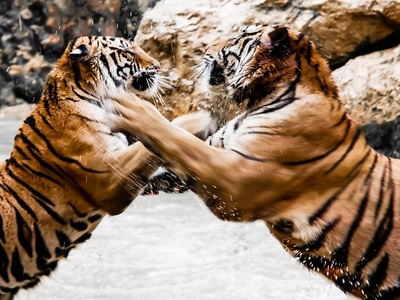
Tiger
Largest wild cat, inhabits tropical and temperate forests, preying on deer and wild pigs. Adults weigh 100–306 kg and can be dangerous to humans when threatened. Several subspecies endangered or critically endangered due to poaching and habitat loss.
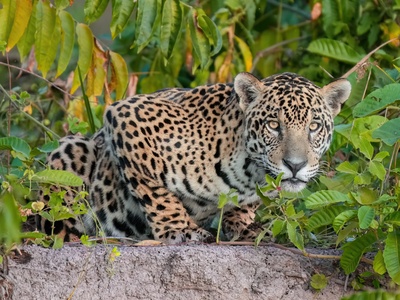
Jaguar
Powerful spotted big cat of Neotropical forests, ambush predator feeding on mammals, reptiles and fish. Adults 56–96 kg, capable of killing caimans and tapirs. Populations fragmented; threatened by habitat loss and conflict with humans.
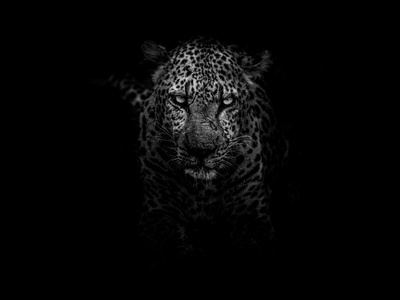
Leopard
Adaptable ambush predator in African and Asian forests, feeding on ungulates and small mammals. Adults 30–90 kg, strong climber that often caches prey in trees. Widespread but locally threatened by hunting and habitat fragmentation.
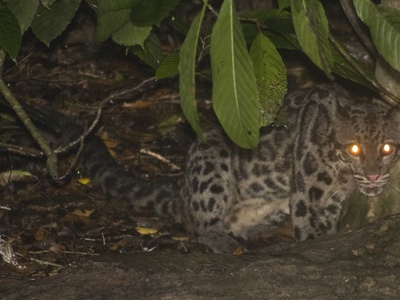
Clouded leopard
Medium-sized forest cat of Southeast Asian rainforests, superb climber feeding on birds and mammals. Adults 11–23 kg, long canines and arboreal habits. Vulnerable due to logging, hunting for pelts, and habitat loss.
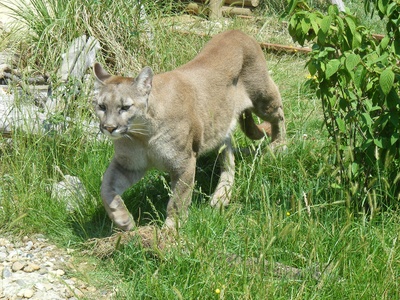
Puma
Large adaptable predator across American forests and mountains, preying on deer and smaller mammals. Adults 35–90 kg, generally avoids humans but can be dangerous. Populations stable in parts of range, but western populations affected by development.
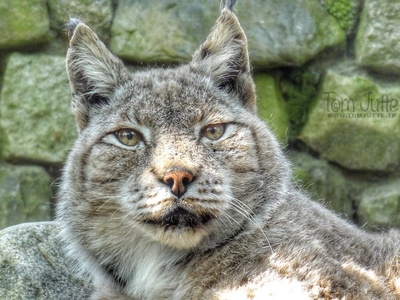
Eurasian lynx
Medium forest cat across Eurasian woodlands, specializes on ungulates like roe deer and hares. Adults 18–30 kg, solitary and elusive. Listed Least Concern overall, though some populations suffer from habitat loss and hunting.
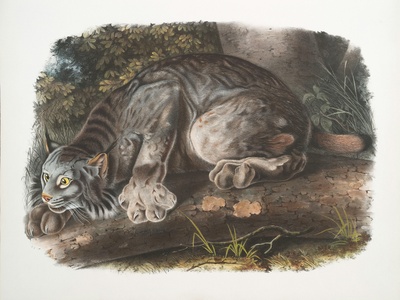
Canada lynx
Boreal forest specialist of North America, preying mainly on snowshoe hares with population cycles. Adults 8–18 kg, large feet for snow travel. Conservation concerns where forests are fragmented and trapping occurs in parts of its range.

Bobcat
Common North American forest and scrub cat, ambushes rabbits, rodents and birds. Adults 6–18 kg, shy but adaptable near human areas. Generally secure though local declines occur due to habitat change and trapping.
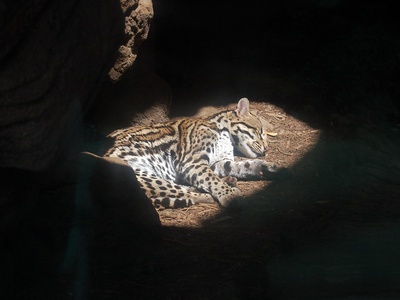
Ocelot
Nocturnal medium cat of Central and South American forests, preying on small mammals, birds and reptiles. Adults 8–18 kg, prized historically for fur. Fragmentation and hunting threaten populations locally though globally still widespread.
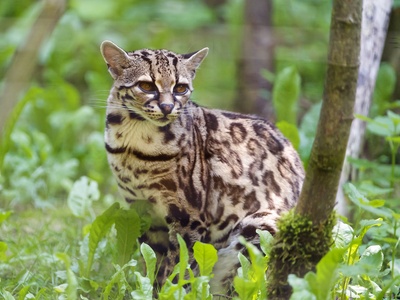
Margay
Small arboreal cat of Neotropical forests, specialized climber hunting mammals, birds and eggs. Adults 2–4 kg, extremely agile and nocturnal. Declining due to deforestation and illegal fur trade in parts of its range.

Fishing cat
Wetland and forest-edge cat of South and Southeast Asia, specializes in fish and aquatic prey. Adults 8–16 kg, strong swimmer known to hunt in water. Threatened by wetland loss, pollution and persecution.

Jaguarundi
Slender, diurnal small cat in Central and South American forests and scrub, preying on rodents, birds and reptiles. Adults 4–8 kg, less arboreal than many small cats. Locally common but sensitive to habitat conversion.
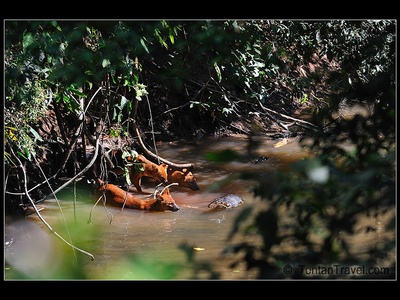
Dhole
Social pack-hunting canid of Asian forests, specialized in cooperative hunts of deer and wild boar. Adults 12–20 kg, bold hunters that can take large prey. Endangered across much of its range due to habitat loss and persecution.
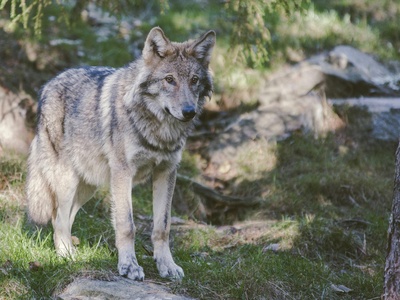
Gray wolf
Large forest and tundra predator across Eurasia and North America, hunts deer, elk and smaller mammals in packs. Adults 30–50 kg, can be dangerous in rare cases. Conservation varies—recovering in some regions, persecuted elsewhere.

Fisher
Forest mustelid of North America, preys on squirrels, porcupines and birds. Adults 2–5 kg, nimble climber and powerful predator of porcupines. Vulnerable in parts of range but recovering with forest management.

American marten
Small, arboreal mustelid of North American forests, eats small mammals, birds and insects. Adults 0.7–2 kg, excellent climber and important predator in boreal woodlands. Locally affected by trapping and habitat fragmentation.
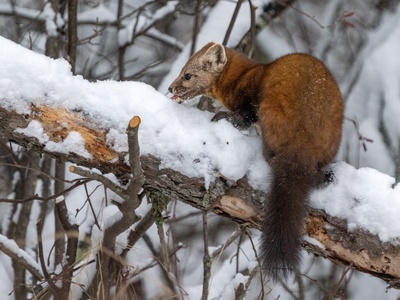
Pine marten
Forest-dwelling mustelid across Eurasia, hunting rodents, birds and insects in woodland. Adults 0.9–2 kg, agile tree climber often seen in coniferous forests. Declines in some areas from logging and persecution.

Yellow-throated marten
Colorful Southeast Asian forest mustelid, hunts birds and small mammals but eats fruit occasionally. Adults 1.5–6 kg, fast and diurnal. Faces habitat loss and hunting in parts of its range but remains relatively widespread.

Wolverine
Powerful carnivore of boreal and montane forests, scavenges and hunts mammals like hares and ungulates. Adults 10–25 kg, known for strength and endurance. Fragmented populations and low densities make them conservation concerns.
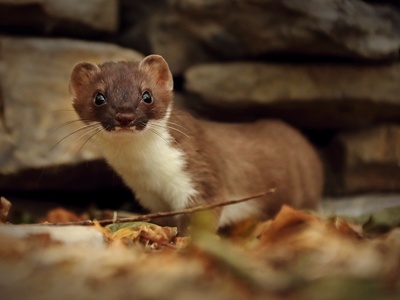
Stoat
Small weasel across forested regions of Eurasia and North America, specializing on rodents and rabbits. Adults 0.1–0.5 kg, highly effective predator with seasonal coat change. Generally of least concern but sensitive to habitat and prey availability locally.
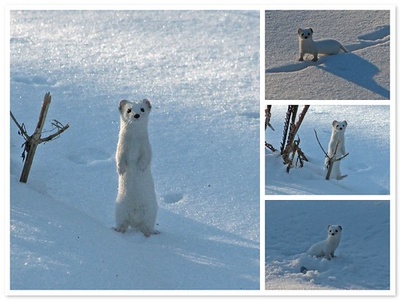
Least weasel
Tiny forest and edge predator feeding almost exclusively on rodents. Adults 0.02–0.1 kg, fierce hunter despite small size. Widespread but populations can fluctuate with prey cycles and habitat change.

Common genet
Nocturnal carnivorous viverrid in African and some European woodlands, eats rodents, birds and insects. Adults 1–3 kg, arboreal and secretive. Locally common but impacted by habitat change and persecution in some regions.

Harpy eagle
Massive rainforest raptor in Central and South America, preying on monkeys and sloths. Adults 6–9 kg, formidable talons and powerful build. Threatened by deforestation and habitat fragmentation across Amazon and Central American forests.

Philippine eagle
Critically endangered forest raptor of Philippine rainforests, feeds on monkeys and large birds. Adults 4–8 kg, extremely rare due to massive habitat loss and hunting; emblematic conservation priority.

Spotted owl
Forest-dwelling nocturnal owl of old-growth North American forests, primarily eats small mammals. Adults 0.5–1.2 kg, indicator of mature forest health. Threatened by logging, habitat fragmentation, and competition from barred owls.
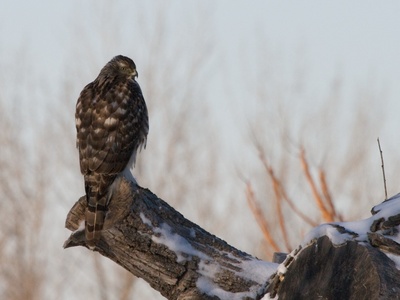
Northern goshawk
Powerful forest hawk across Eurasia and North America, hunts birds and mammals with agile flight through trees. Adults 0.6–1.3 kg, territorial and skilled predator. Populations affected by forest management and persecution.
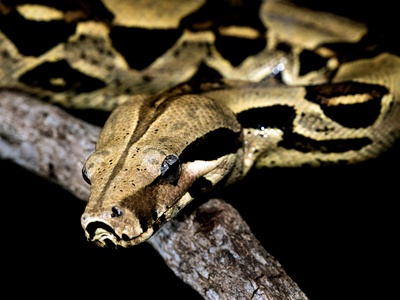
Boa constrictor
Neotropical forest snake, ambush predator constricting mammals, birds and reptiles. Adults 10–40 kg depending on region, strong and potentially dangerous in rare encounters. Habitat loss and persecution threaten some local populations.
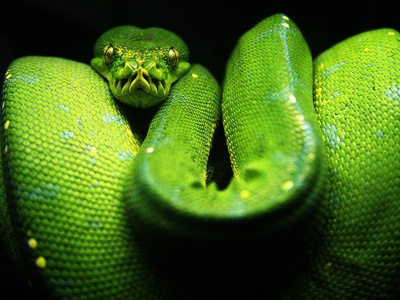
Green tree python
Arboreal rainforest python of New Guinea and Australia, eats birds and small mammals. Adults 1.5–2.5 kg, striking green color and ambush hunting. Habitat loss and collection for pet trade affect some populations.

Emerald tree boa
Amazon rainforest ambush predator, feeds on birds and small mammals from branches. Adults 2–3.5 kg, vivid green coloring and heat-sensing pits. Deforestation and illegal collection are conservation concerns.
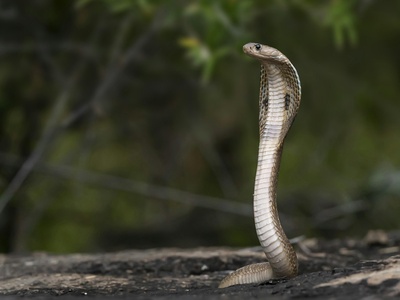
King cobra
Large forest snake of South and Southeast Asia, specializes on other snakes and small vertebrates. Adults 6–12 kg, can deliver deadly venom and avoids humans when possible. Habitat destruction pressures populations.

Anaconda
Giant aquatic snake of Amazonian forests and wetlands, preys on mammals, birds and caimans. Adults 30–250 kg for large females, very powerful constrictors. Local hunting and habitat change threaten some populations.

Asian water monitor
Large Southeast Asian monitor lizard in mangroves and forests, opportunistic carnivore eating fish, birds and mammals. Adults 12–20 kg, adaptable but hunted for skin and meat; often survives near people.
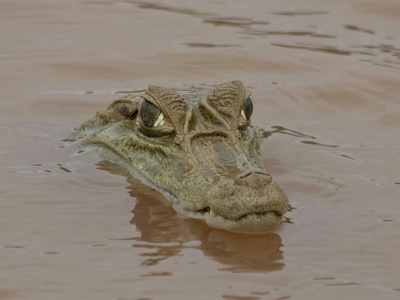
Spectacled caiman
Freshwater predator in Central and South American forest waterways, eats fish, birds and mammals. Adults 10–40 kg depending on age, important river predator. Locally hunted but widespread in many Amazonian habitats.

Tayra
Neotropical forest mustelid, hunts rodents, birds and small mammals and eats fruit occasionally. Adults 3–7 kg, agile climber known for diurnal activity. Affected by deforestation but fairly adaptable in some areas.

Marbled cat
Small, elusive forest cat of Southeast Asia, hunts birds and small mammals in canopy and understory. Adults 2–5 kg, superb climber with cryptic coat. Vulnerable from deforestation and the wildlife trade.

African golden cat
Secretive forest feline of African rainforests, preys on rodents, birds and small ungulates. Adults 7–16 kg, ground-dwelling and solitary. Threatened by logging and bushmeat hunting across much of its range.
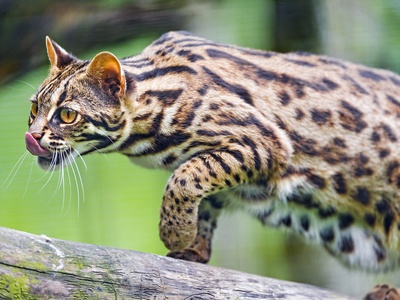
Leopard cat
Small forest cat across Asia, preying on rodents, birds and amphibians. Adults 3–7 kg, adaptable but declining in some areas due to habitat loss and persecution for fur. Often occupies secondary forests.

Flat-headed cat
Specialist wetland forest cat of Southeast Asia, heavily fish- and amphibian-eating. Adults 2–3.5 kg, rare and threatened by peatland drainage, logging and conversion to agriculture.

Tasmanian devil
Carnivorous marsupial in Tasmanian forests and scrub, a scavenger and hunter of small mammals and birds. Adults 6–8 kg, iconic but threatened by devil facial tumor disease and habitat change.

Spotted-tailed quoll
Large carnivorous marsupial of Australian forests, preys on mammals, birds and reptiles. Adults 1–5 kg, arboreal skills and nocturnal hunting. Vulnerable from habitat loss and introduced predators like foxes and cats.
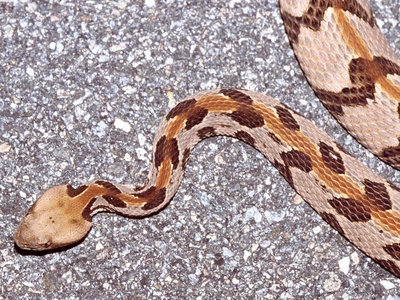
Timber rattlesnake
Venomous pit viper of eastern US forests, ambushes small mammals as prey. Adults 1–6 kg, potentially dangerous to humans if provoked. Threatened in parts of range due to persecution and habitat fragmentation.
